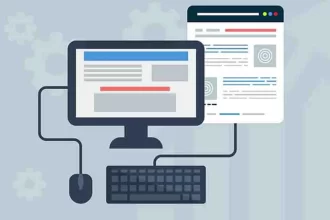Florida accident victims often feel confused after a sudden injury because they must balance medical appointments, insurance negotiations, and financial strain at the same time. Ocala residents face additional challenges when they try to understand how comparative fault influences compensation. This legal principle affects settlement amounts, evidence strategies, and courtroom arguments, so injured individuals benefit from understanding it before they move forward.
Many victims begin searching for guidance and to find a personal injury lawyer in Ocala who can explain each stage of the process. Florida’s comparative fault system evaluates each party’s conduct in an accident. This approach influences case value and determines how much compensation remains available. When victims understand how comparative negligence functions, they gain control over their legal strategy.
Comparative Fault Rules Shape Compensation in Meaningful Ways
Florida follows a modified comparative fault system. Courts and insurers examine every detail of an accident and assign a percentage of responsibility to each party. If victims carry part of the blame, their compensation decreases proportionally. This rule encourages every party to act responsibly on the road, on private property, and in public spaces.
Comparative fault plays a significant role in settlement discussions. Insurers attempt to limit their payout by increasing the victim’s responsibility. Adjusters sometimes claim the victim failed to notice hazards, ignored warnings, or behaved carelessly. Victims protect their compensation when they understand how insurers evaluate fault and when they gather strong evidence that supports their version of events.
Detailed Evidence Reduces Attempts to Shift Blame
Comprehensive evidence limits arguments that accuse victims of contributing to the accident. Photographs, witness statements, surveillance footage, and medical records all provide powerful support. Victims strengthen their case by collecting information at the scene before conditions change.
Accident reports also provide valuable insight by documenting roadway conditions, weather, driver behavior, injuries, and statements from the involved parties. In personal injury cases involving premises liability or product defects, evidence often includes maintenance records, design specifications, or safety warnings. Strong documentation gives victims an advantage when insurers question credibility.
Skilled Attorneys Challenge Fault Accusations Effectively
Lawyers who understand comparative fault rules analyze each accusation and respond with facts. They review police reports, expert evaluations, and accident reconstruction results to demonstrate how the incident occurred. Attorneys often identify errors in the insurer’s reasoning and challenge attempts to increase victim responsibility.
This representation also protects victims from harmful statements that insurers might use against them. Adjusters sometimes ask leading questions to shift responsibility. Lawyers prepare victims for these conversations and guide them through each interaction. Clear communication prevents misunderstandings that influence case value.
Medical Documentation Plays a Critical Role in Strengthening Claims
Medical evaluations reveal the full extent of the accident’s impact. Thorough records reveal injury mechanisms, long-term implications, and treatment needs. Physicians often document range-of-motion limitations, diagnostic test results, and restrictions that affect daily living.
These records help establish the connection between the accident and the injuries. They also reduce arguments that claim the victim contributed to the severity of the injury through delayed treatment or unrelated medical conditions. Consistent medical care provides a timeline that counteracts insurer attempts to minimize damages.
Witness Testimony Helps Establish Accurate Fault Allocation
Witnesses often provide reliable third-party accounts. Their statements offer critical details about visibility, driver conduct, environmental hazards, and timing. Witness testimony addresses disputes about speed, distraction, or sudden lane changes. These accounts also help victims counter claims that they ignored warnings or acted carelessly.
In some cases, expert witnesses add specialized insight. Accident reconstruction professionals analyze skid marks, vehicle damage, and injury patterns. Their technical evaluations support arguments that challenge insurer assumptions.
Comparative Fault Also Influences Long-Term Financial Planning
Victims must understand how comparative negligence affects their financial recovery, as it shapes future decisions. A lower fault percentage increases the available compensation, helping victims manage medical expenses, lost income, and long-term treatment. An experienced attorney evaluates all aspects of the claim and develops strategies to reduce liability and maximize recovery.
Victims often face ongoing challenges after serious injuries. Physical therapy, mobility aids, future surgeries, and lifestyle adjustments all contribute to long-term costs. Accurate fault allocation is essential because it directly influences the financial resources available for these needs.
Important Takeaways to Strengthen Your Comparative Fault Strategy
Florida’s comparative fault rules influence every injury claim in Ocala. Victims who understand this legal structure improve their position during negotiations, gather more substantial evidence, and avoid mistakes that reduce compensation. An effective legal strategy focuses on accurate fact-gathering, clear communication, and strong rebuttals to unfair fault accusations.










